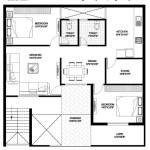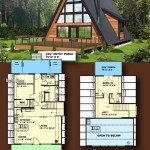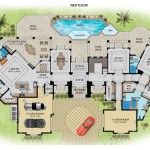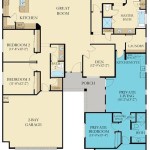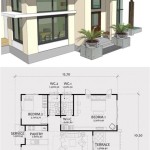How To Create Building Plans
Creating building plans is a crucial step in any construction project. These plans serve as a blueprint for the entire project, outlining the design, layout, and specifications of the structure. Whether you're a professional architect or a homeowner embarking on a DIY project, understanding the process of creating building plans is essential. Here's a comprehensive guide to help you get started:
1. Determine Your Needs: Before you start drawing, it's important to clearly define your project's requirements. Consider the purpose of the building, the number of rooms, the desired size, and any special features or amenities you need. This will help you establish the scope of your project and ensure that the plans meet your specific needs.
2. Research and Gather Inspiration: Explore various architectural styles, floor plans, and design ideas to gather inspiration. Visit homes and buildings, browse design magazines and online resources, and talk to architects or contractors to learn about different options. This will help you refine your vision and create plans that align with your aesthetic preferences.
3. Create a Floor Plan: The floor plan is the foundation of your building plans. It shows the layout of the rooms, their dimensions, and the relationship between them. Start by sketching a rough draft on paper, then use a software program or hire an architect to create a more detailed plan. Include all necessary spaces, such as bedrooms, bathrooms, kitchens, living areas, and any other functional areas.
4. Develop Elevations and Sections: Elevations show the exterior walls of the building from different sides, while sections provide a cross-sectional view to illustrate the structure's height and depth. These drawings help visualize the building's overall appearance and ensure that it meets building codes and aesthetic requirements.
5. Include Site Information: Building plans must include information about the building's location, orientation, and relationship to the surrounding environment. This includes a site plan showing the property boundaries, driveways, patios, fences, and other site features.
6. Specify Materials and Finishes: In addition to the structural details, building plans should specify the materials and finishes used for the construction. This includes information on walls, roofing, flooring, cabinetry, paint, and other finishes. The plans should clearly indicate the type, quality, and quantity of materials required.
7. Consult Building Codes: Building plans must comply with local building codes and regulations to ensure the safety and structural integrity of the building. Research the applicable codes and incorporate them into your plans. This includes requirements for fire safety, accessibility, energy efficiency, and other relevant regulations.
Creating building plans can be a complex and time-consuming process, but it is essential to ensure the success of your construction project. By following these steps, you can create comprehensive and accurate plans that will guide the construction process and result in a well-built and functional structure.

Floor Plan Creator And Designer Free Easy App

Design Your Own House Floor Plans Roomsketcher

How To Draw A Floor Plan The Simple 7 Step Guide For 2024

Create Floor Plan

How To Draw Blueprints For A House With S Wikihow

Draw Floor Plans With The Roomsketcher App

How To Create A Floor Plan Draw Building Plans Drawing For Design Site Sketch Of An Estate

Design Your Own House Floor Plans Roomsketcher

Create Floor Plans

Floor Plan Wikipedia

